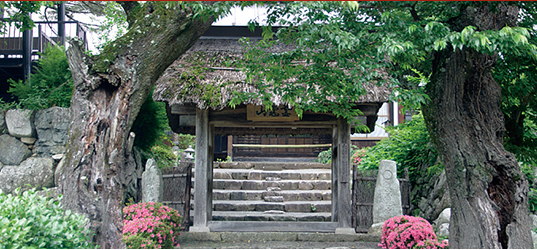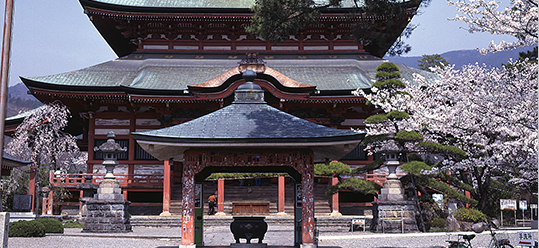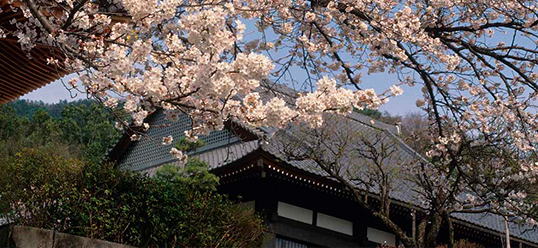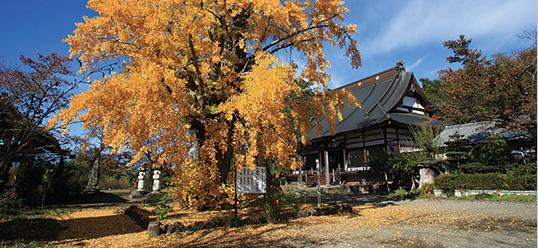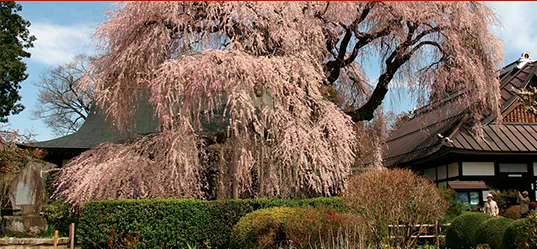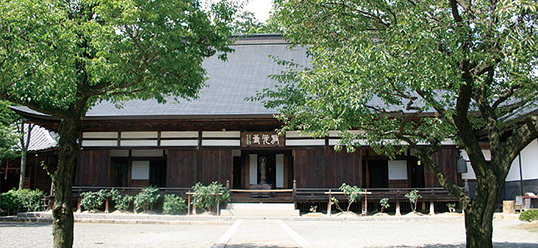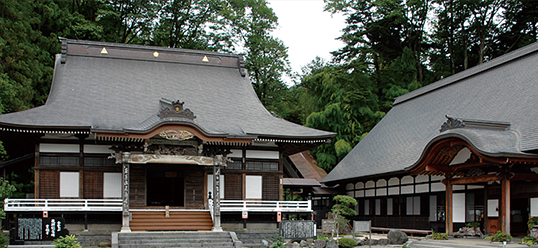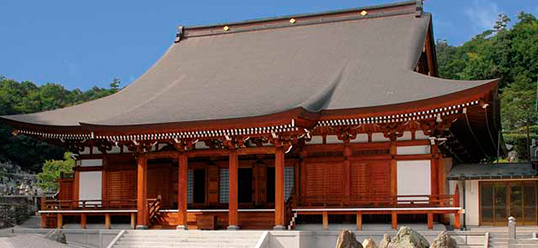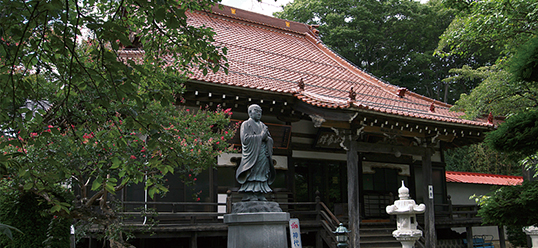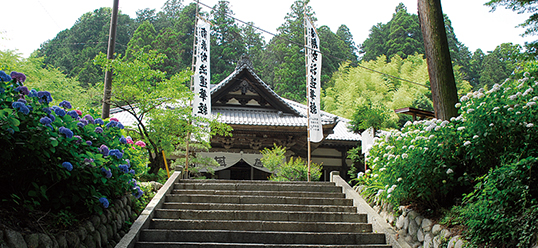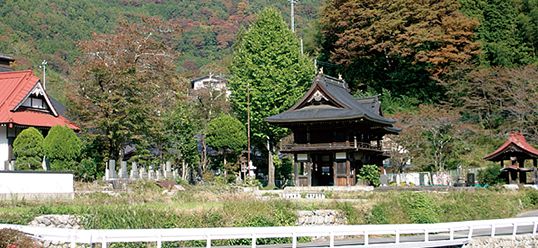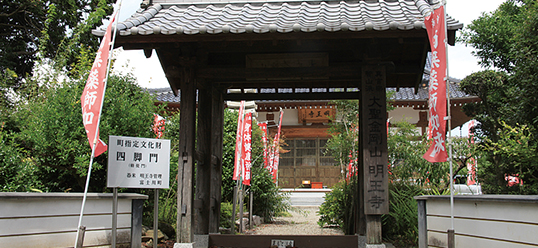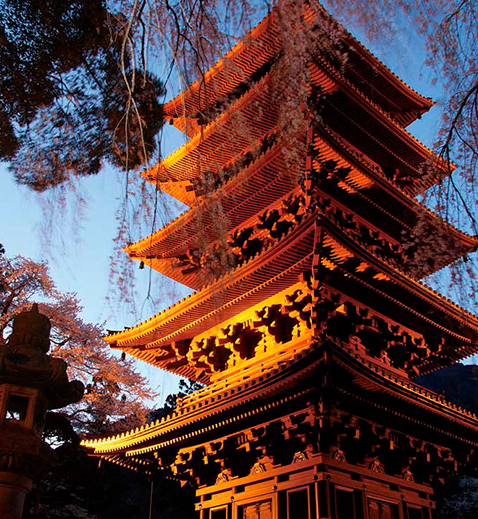Go to the mountaintop via the Minobusan Ropeway from Kuon-ji Temple. Okuno-in Shishinkaku Temple is a sacred spot where Saint Nichiren used to think about his parents who were living far away. Saint Nichiren was born in 1222 in what is now Kamogawa City, Chiba. He became a priest at 12 years of age; however, it was revealed to him that the essence of Buddhism was Hokke-kyo, the Lotus Sutra, after which he changed his name to Nichiren and began propagating the Lotus Sutra.
However, sine his preaching was not accepted by the Kamakura Shogunate, he went to Mt. Minobu after repeated persecutions, and devoted himself to the education of his disciples. Nichiren lived in Minobu for nine years. During that time, it is said that he used to leave his thatched hut thinking about his hometown and climb to the mountaintop, where he would cherish the memory of his parents while looking in the direction of their faraway home.
